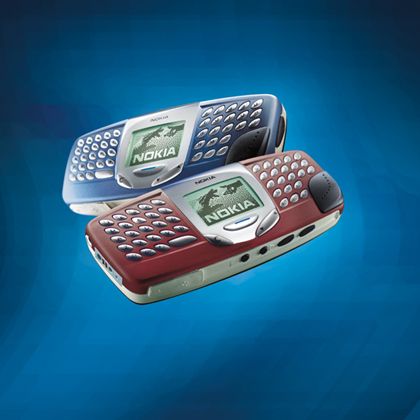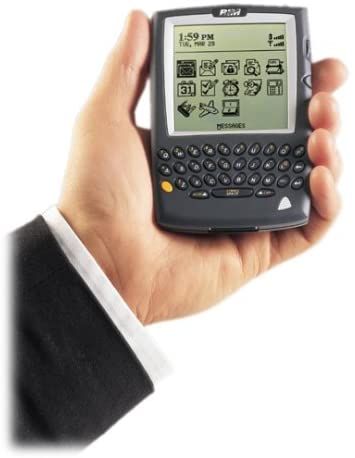3RD GENERATION CELLPHONES
THINGSText: Stefania Garassini
An example is the Nokia 5510, equipped with a wide keyboard, MP3 file reader, videogames and aimed in particular at the young; another, available now only in Canada is the V101 from Motorola, which includes instant messaging and the possibility of writing and sending text messages: also in this case the target is a young public, who consider the cellphone a tool for entertainment and socialising. The latest models from Sony-Ericsson and Nokia emphasise video games and digital photography, all with colour screens. In particular the T68i from Sony Ericsson allows pictures to be taken and sent in real time, and the 7650 from Nokia which has an integrated camera. Z700 from Sony Ericsson is instead thought up above all for applications linked to video games.

Nokia, 5510
BlackBerry is still more specialised, a portable email handset from the Canadian company Research in Motion, introduced in North America in 1999 and now coming onto the European market (just come to Italy following an agreement between Tim and the provider Dada). Blackberry efficiently resolves a real problem: dealing with email whilst on the move. The handset is always on and lets you know automatically when a message is received (in push mode). It is necessary to identify with some clarity demands such as this in order that the third generation cellphone avoids becoming the nth “solution looking for a problem”. This has been the case for many kinds of technology praised before their real diffusion: from the videophone to virtual reality, from interactive TV to WAP. But today the investments are of decidedly other dimensions.

Blackberry, 5810
“We are working in both directions: integrated devices with various functions as well as specialised devices”, explains Andrea Marrubini, marketing manager at Alcatel. The French company is working on a series of monofunctional devices, including the UMTS modem which is already available and can be connected to a laptop computer. A first step in this direction is the diffusion of the Bluetooth standard, which allows for wireless connection between various accessories, such as earphone or add on keyboard. The extreme outcome of this specialisation and distribution of functions is, as we have mentioned, that of “wearable” devices, a strong point of Alcatel’s design and an important area of research also for Motorola.
“In our opinion what we will need in the future is not a screen with more and more information – explains Iulius Lucaci, lead designer V segment of Motorola – but rather an intuitive way to manage this information. The screen for example is not necessarily the ideal interface: it implies that the user can sit and look at it”. Motorola’s studies go in the direction of incorporating body language and an “affective” relationship with technology. An example is the telephone in the shape of a glove or the video camera set like a jewel in a necklace, designed for living at a distance the sensations of the person wearing them. “We start with the presupposition that we should interact a great deal with this device and that this interaction should be pleasant – states Lucaci -: we are concentrating a great deal on the user interface and techniques which allow the filtering of messages, establishing a series of priorities”. What has been proposed is a kind of stick using Microdisplay technology which displays only a line of text, but once you look closer you can see a much broader information space. The telephone becomes as such only an element of a broader information network which coincides with the body itself of the user and the environment. Not by chance the Motorola research group is called “Intelligence everywhere”. The point is to understand when the users will be ready for this evolution”, concludes Lucaci. The last word, as always, is not from technology.
Text: Stefania Garassini




